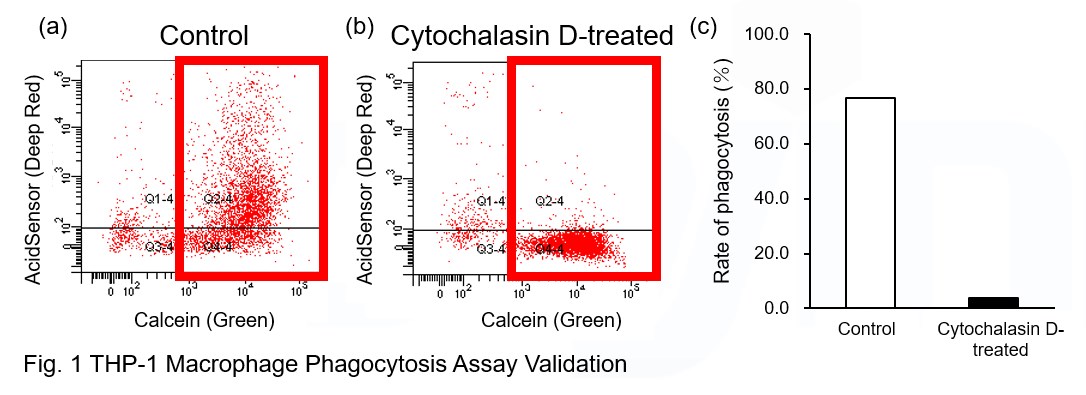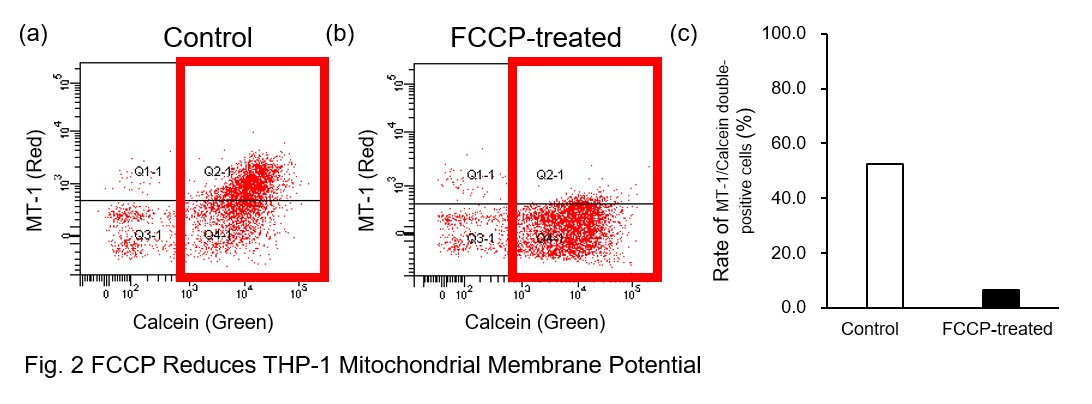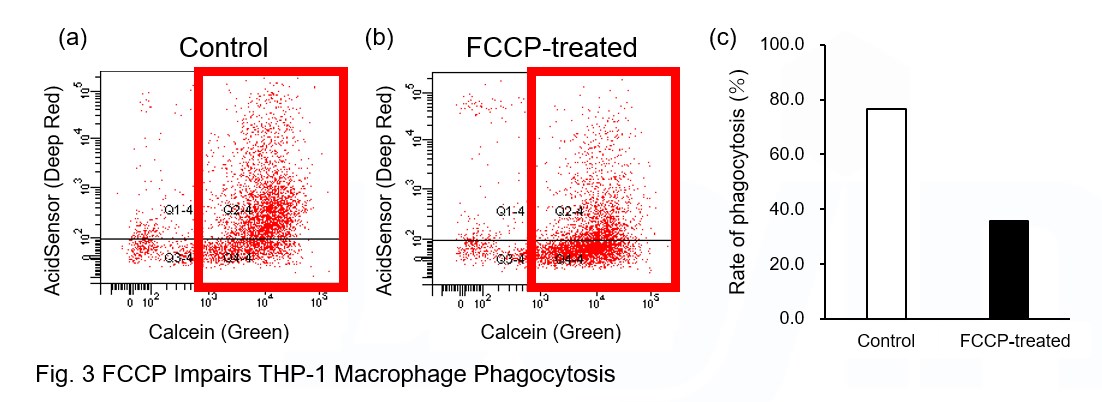| [Jul. 23, 2024] | Previous Science Note |
|
Immune cell senescence is a critical factor in the progression of several diseases. As immune cells age and enter a senescent state, their ability to respond to infection, eliminate senescent cells, and regulate inflammation diminishes. This impaired immune function may contribute to the development and progression of age-related diseases, including cancer, cardiovascular disease, and neurodegenerative disorders. In addition, the accumulation of senescent immune cells in tissues can create a pro-inflammatory environment that further exacerbates disease pathology and impairs tissue function. |
|
|
Related Techniques |
|
|
|
|
|
|
|
|
Related Applications |
Phagocytosis assay of labeled apoptotic cells in THP-1 cells
AcidSensor-labeled substances are taken up by cells and their fluorescence increases when they reach acidic organelles such as lysosomes. Taking advantage of this property, we evaluate the phagocytic activity of apoptotic cells by co-culturing AcidSensor-labeled apoptotic cells with Calcein-labeled THP-1 macrophages. As a result, Calcein (Green) / AcidSensor (Deep red) double-positive cells, indicating THP-1 macrophages phagocytosing apoptotic cells, were observed by flow cytometry (Fig. 1a). Furthermore, when the phagocytosis of THP-1 macrophages was inhibited by Cytochalasin D, the percentage of double-positive cells decreased (Fig. 1b and 1c), confirming that the assay system can accurately evaluate phagocytosis. A recent report reveals that inhibition of mitochondrial function induces a switch to glycolysis and reduces phagocytosis in cultured microglia, resident macrophages in the central nervous system*. To replicate this result, phagocytosis assays were performed using mitochondria-inhibited THP-1 macrophages. The results show that FCCP, a potent uncoupler of oxidative phosphorylation in mitochondria, decreases mitochondrial membrane potential (MT-1, Red) of THP-1 macrophages (Fig. 2) and reduces phagocytosis (Fig. 3). *Lauren H. Fairley, et al., PNAS (2023)
|


















